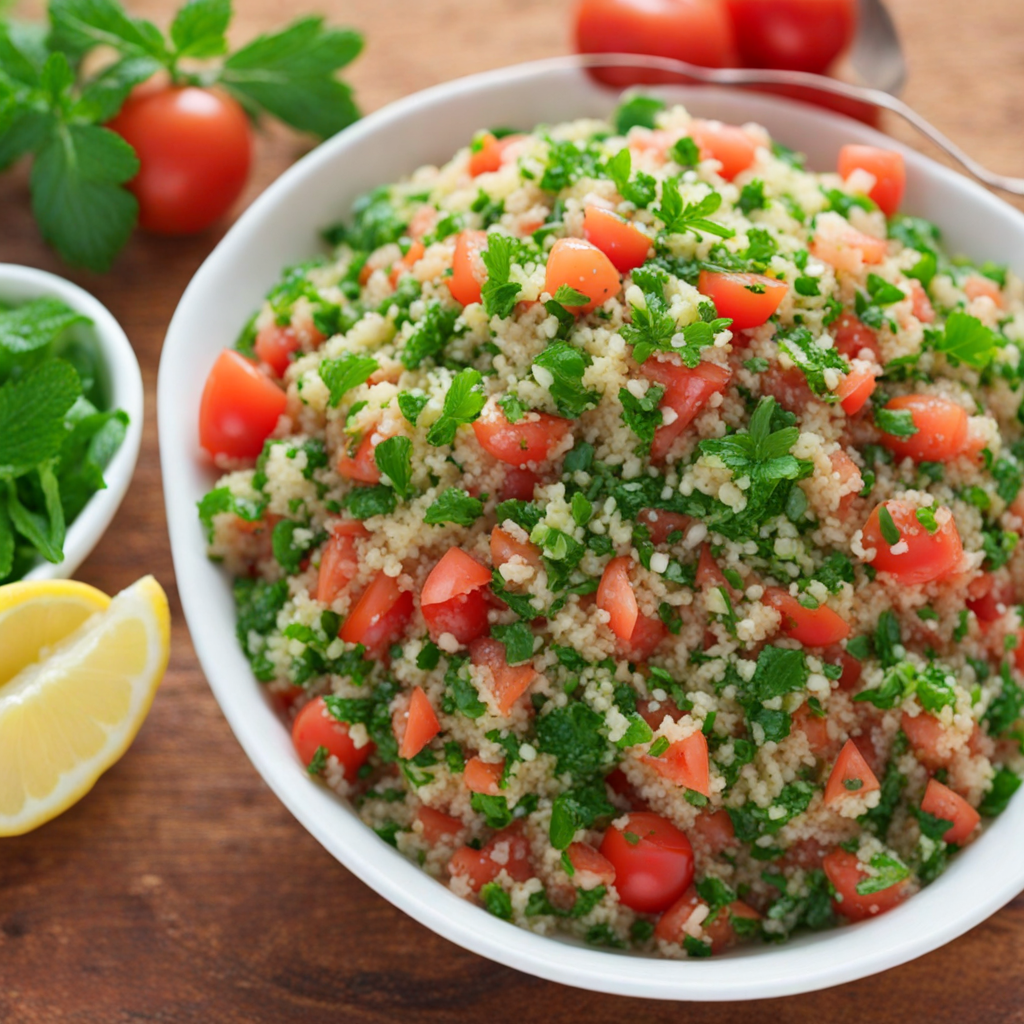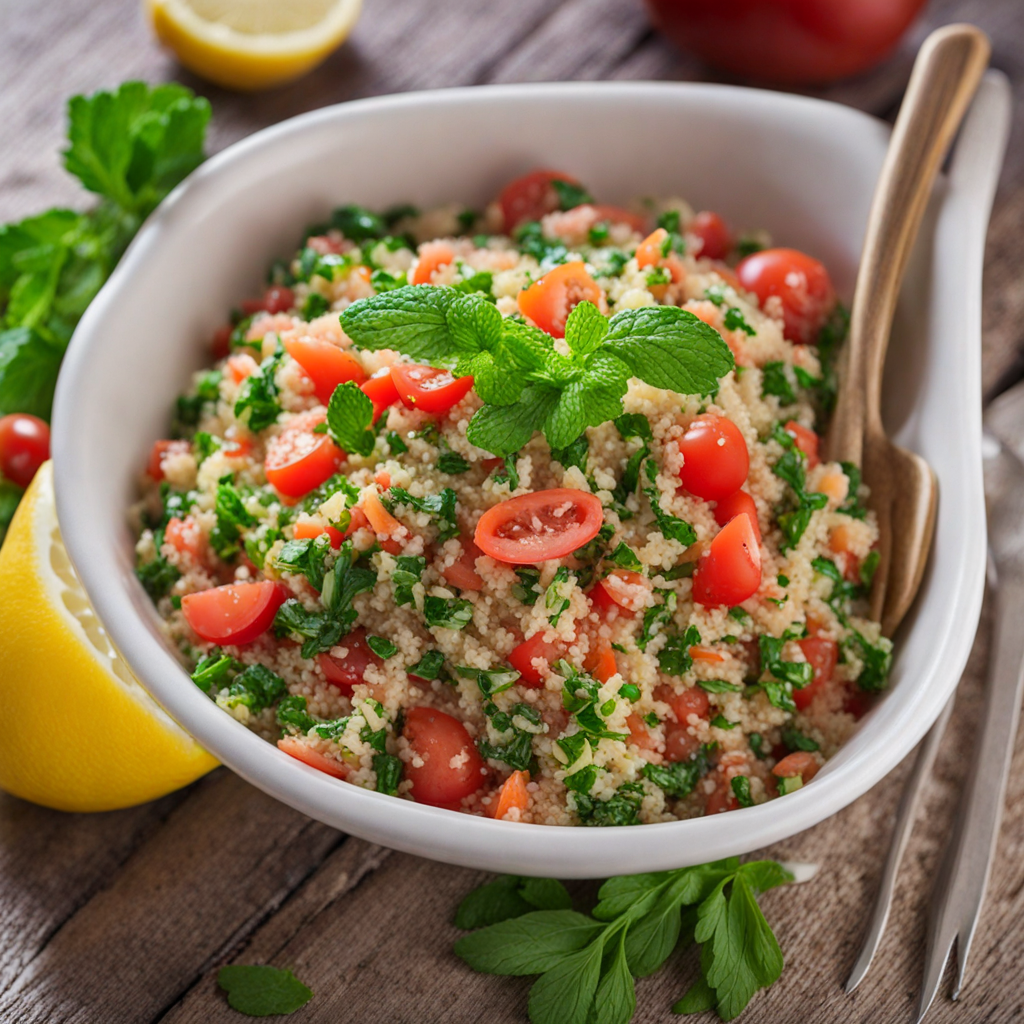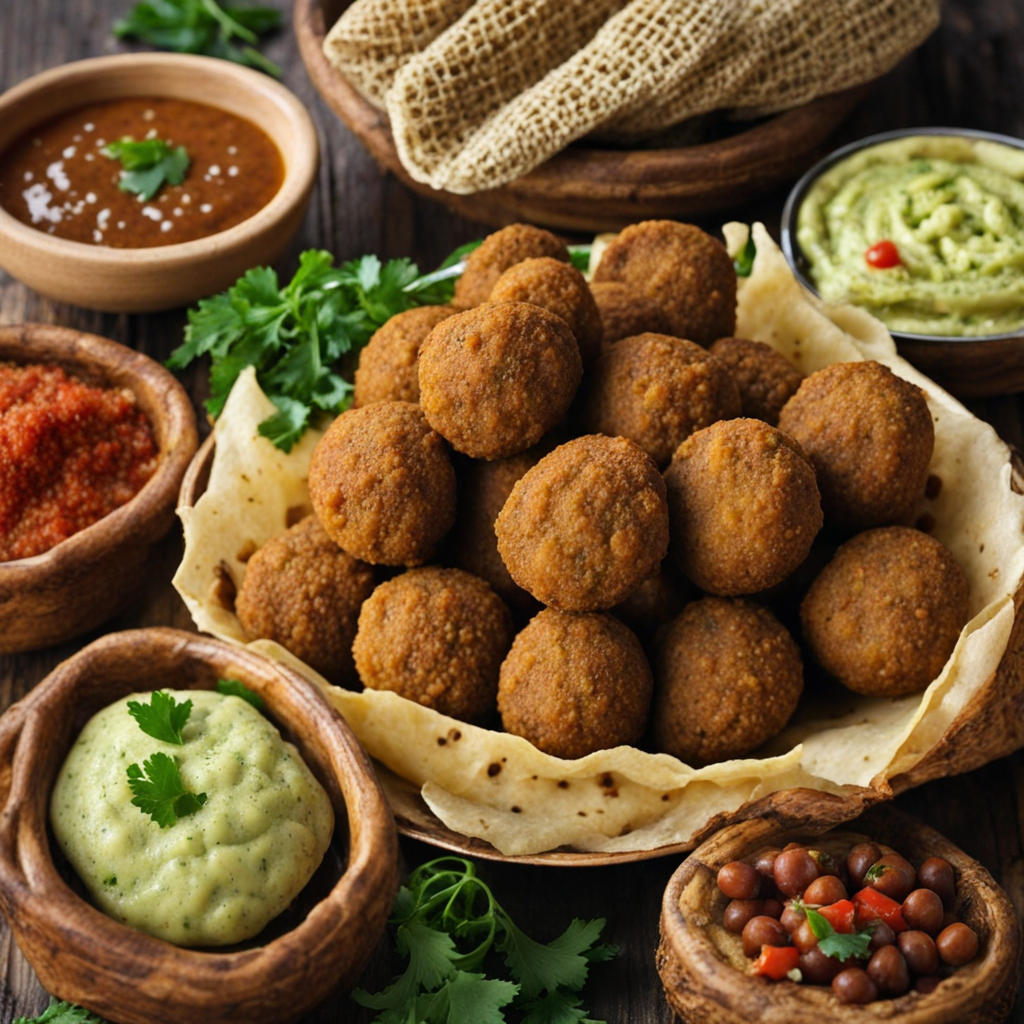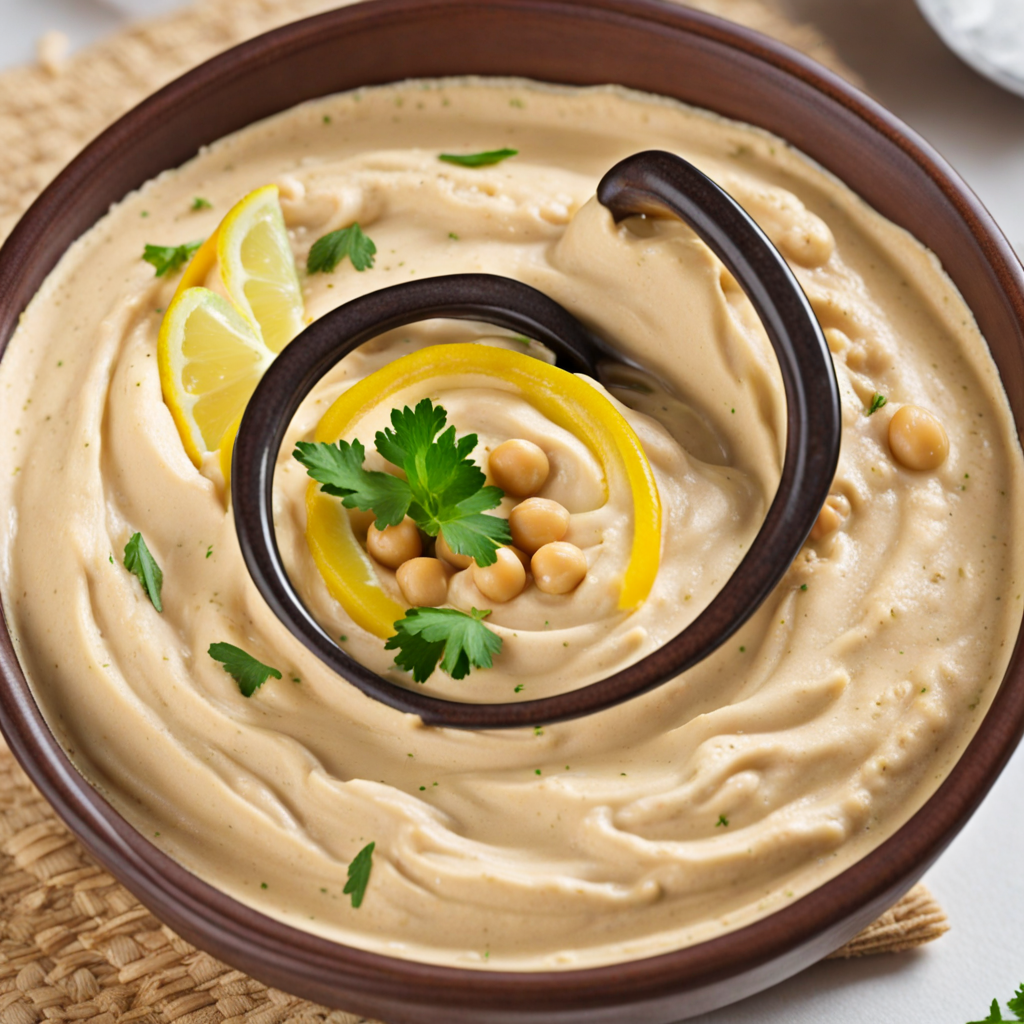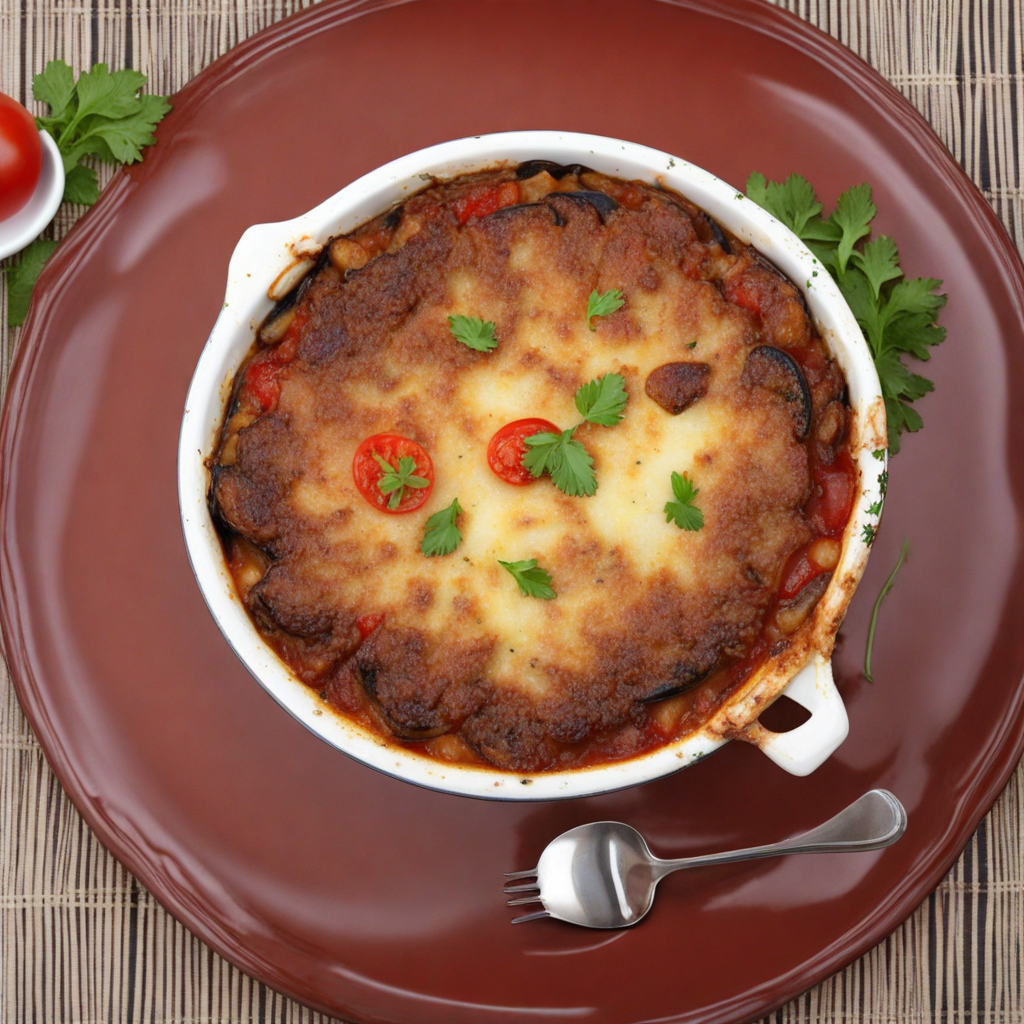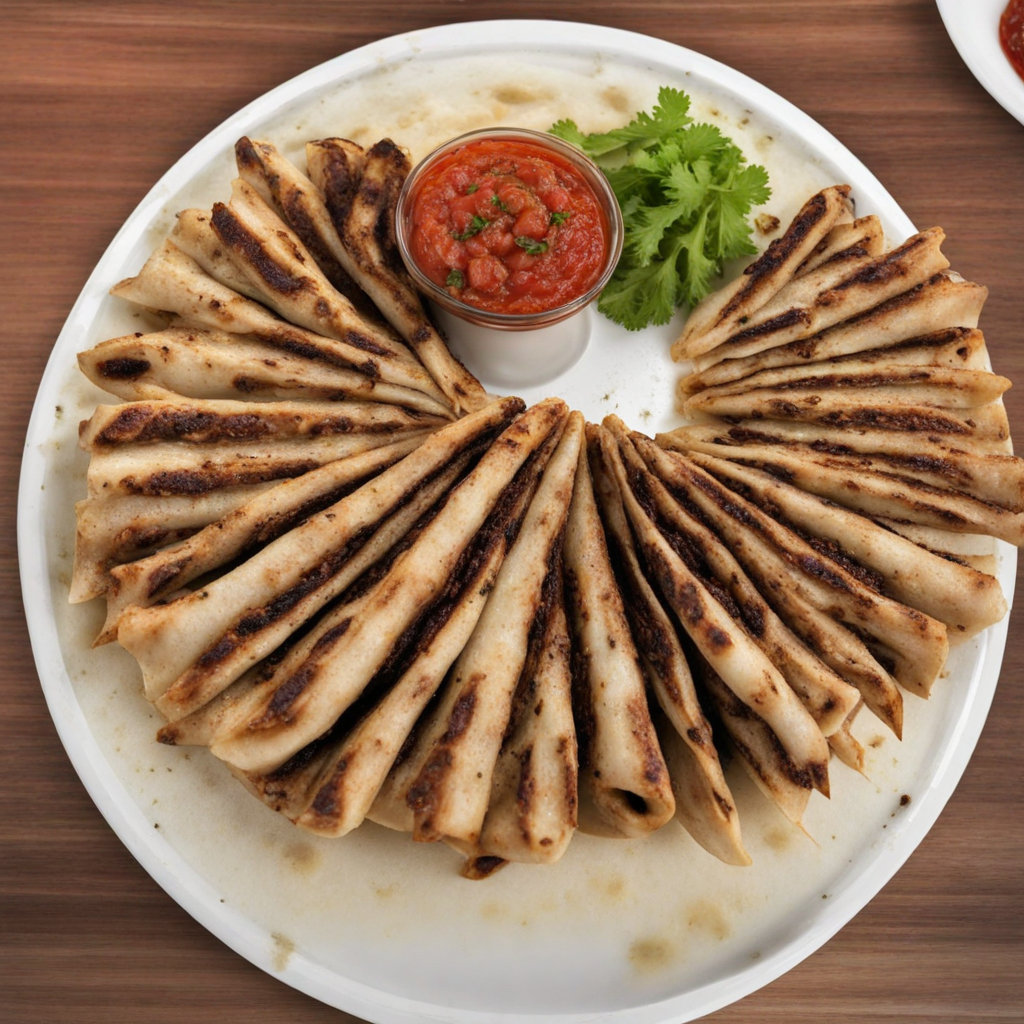Tabbouleh
Tabbouleh is a vibrant and refreshing salad that originates from Lebanon, showcasing the country's rich culinary heritage. At its core, tabbouleh is made with finely chopped parsley, which provides a bright green base that is both aromatic and nutritious. The salad is accentuated with diced tomatoes, cucumbers, and a hint of onion, creating a colorful medley of ingredients that not only please the eyes but also tantalize the taste buds. Each bite is a burst of freshness, with the herbs and vegetables harmonizing beautifully, making it a perfect accompaniment to various dishes or a light meal on its own. One of the key elements that elevate tabbouleh is the dressing, typically composed of high-quality olive oil and freshly squeezed lemon juice. This combination adds a zesty brightness that enhances the natural flavors of the ingredients. The balance of acidity from the lemon and the richness of the olive oil creates a refreshing contrast, making tabbouleh an ideal dish for warm weather. Additionally, some variations include a sprinkle of salt and a dash of allspice, which introduces a subtle depth to the overall flavor profile. Traditionally served as part of a mezze platter, tabbouleh is not just a salad; it embodies the spirit of sharing and communal dining that is central to Lebanese culture. It's often enjoyed with pita bread, allowing diners to scoop up the salad and savor its vibrant flavors. With its wholesome ingredients and invigorating taste, tabbouleh invites food lovers to explore the essence of Lebanese cuisine, making it an essential dish for anyone looking to expand their culinary horizons.
How It Became This Dish
Origin of Tabbouleh Tabbouleh, a vibrant and refreshing salad, has its roots in the Levant region, particularly in Lebanon and Syria. The dish's name is derived from the Arabic word "عطبة" (ittiba), which means "to season." It is believed that tabbouleh can be traced back to ancient times, with some historians suggesting that it may have originated in the mountains of Lebanon, where the lush environment allowed for the cultivation of fresh herbs and vegetables. The use of bulgur, a key ingredient in the salad, aligns with the agrarian lifestyle of the region, where wheat was a staple crop. Traditionally, tabbouleh is made with finely chopped parsley, mint, tomatoes, onions, and soaked bulgur, all mixed together with olive oil, lemon juice, and salt. This dish is not only a culinary delight but also a reflection of the natural bounty of the Mediterranean climate, emphasizing the importance of fresh, seasonal ingredients in Middle Eastern cuisine. The balance of flavors in tabbouleh, where the tartness of lemon and the freshness of herbs take center stage, highlights the harmony between the ingredients and the land from which they come. \n\n Cultural Significance Tabbouleh holds a special place in Lebanese culture and is often served during festive occasions and family gatherings. It symbolizes hospitality and the importance of sharing food within the community. The dish is frequently included in mezze platters, a traditional way of serving multiple small dishes for communal enjoyment. This communal aspect of dining reflects the social fabric of Lebanese society, where food plays a crucial role in building and maintaining relationships. Moreover, tabbouleh is not just a salad; it represents a cultural identity. For many Lebanese, it is a source of pride and a culinary emblem of their heritage. The dish has transcended its origins, becoming a staple in Middle Eastern restaurants worldwide. This global presence has contributed to the promotion of Lebanese cuisine, making tabbouleh a symbol of Lebanese hospitality and culinary excellence. \n\n Historical Development The history of tabbouleh is intertwined with the broader agricultural practices of the Levant. Wheat cultivation dates back to ancient civilizations, which laid the groundwork for the use of bulgur in dishes like tabbouleh. Over time, as trade routes expanded and cultural exchanges flourished, the ingredients for tabbouleh began to evolve. The introduction of new herbs and spices, influenced by neighboring regions, enriched the dish's flavor profile. In the 19th and early 20th centuries, as Lebanese immigrants spread across the globe, they carried their culinary traditions with them. This migration played a significant role in the global recognition of tabbouleh. Lebanese communities in the Americas, Europe, and Australia began to prepare tabbouleh, adapting it to their local ingredients while retaining its core elements. This adaptability has allowed tabbouleh to maintain its relevance and popularity in diverse culinary landscapes. \n\n Regional Variations While Lebanon is often credited with popularizing tabbouleh, it is worth noting that variations of the dish exist throughout the Levant and beyond. In Syria, for example, tabbouleh can include a higher proportion of bulgur, resulting in a heartier salad. In contrast, the Palestinian version may emphasize the use of more tomatoes and less bulgur, showcasing the regional preferences for ingredients. In recent years, tabbouleh has undergone a modern transformation, with chefs experimenting with new ingredients and presentation styles. Some variations include quinoa or farro instead of bulgur, catering to health-conscious consumers and those with gluten sensitivities. These adaptations highlight the versatility of tabbouleh while still honoring its traditional roots. \n\n Contemporary Popularity Today, tabbouleh enjoys widespread popularity not only as a staple of Lebanese cuisine but also as a beloved dish in health-conscious diets. Its fresh ingredients and vibrant flavors make it a favored choice among those seeking nutritious options. The rise of vegetarian and vegan diets has further propelled tabbouleh into the spotlight, as it is naturally plant-based and packed with vitamins and minerals. Social media has also played a significant role in the revival and global appreciation of tabbouleh. Food bloggers, influencers, and chefs share their interpretations and presentations of the dish, inspiring others to explore its preparation. As a result, tabbouleh has become a symbol of healthy eating and a quintessential representation of Mediterranean cuisine. \n\n Tabbouleh in the Global Context As tabbouleh continues to gain traction in international culinary scenes, it serves as a bridge between cultures. It invites people to explore the flavors of Lebanon while promoting the values of sharing and community that are central to Middle Eastern dining. Culinary festivals, food fairs, and cultural events often feature tabbouleh, allowing it to reach new audiences and spark interest in Lebanese heritage. Furthermore, the dish has become a subject of culinary education, with classes and workshops dedicated to teaching the art of making authentic tabbouleh. These initiatives not only preserve traditional recipes but also foster appreciation for the cultural significance behind the dish. As chefs and home cooks alike embrace tabbouleh, they contribute to its ongoing story, ensuring that it remains a beloved staple in kitchens around the world. \n\n Conclusion In summary, tabbouleh is more than just a salad; it is a rich tapestry woven from history, culture, and the agricultural practices of the Levant. Its evolution over time reflects the adaptability and resilience of Lebanese culinary traditions. As tabbouleh continues to inspire and delight people globally, it stands as a testament to the enduring power of food to unite and celebrate cultural identity. Through every bite of tabbouleh, one can taste the legacy of the land and the love of those who have prepared it for generations.
You may like
Discover local flavors from Lebanon


